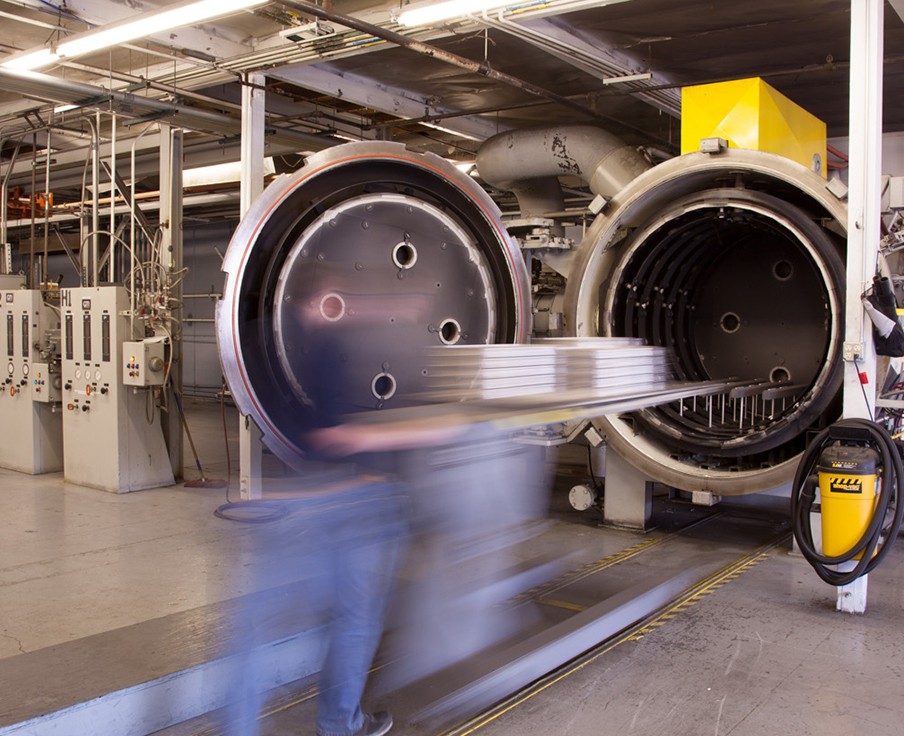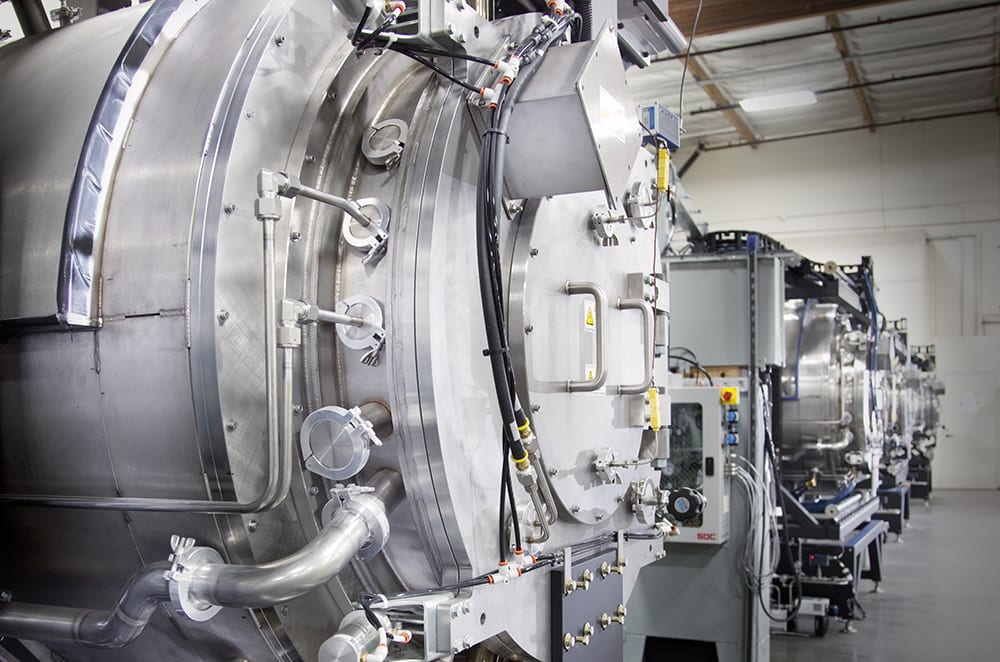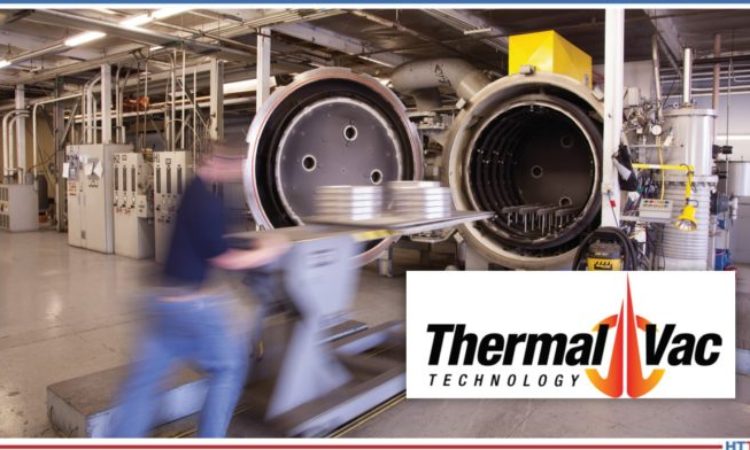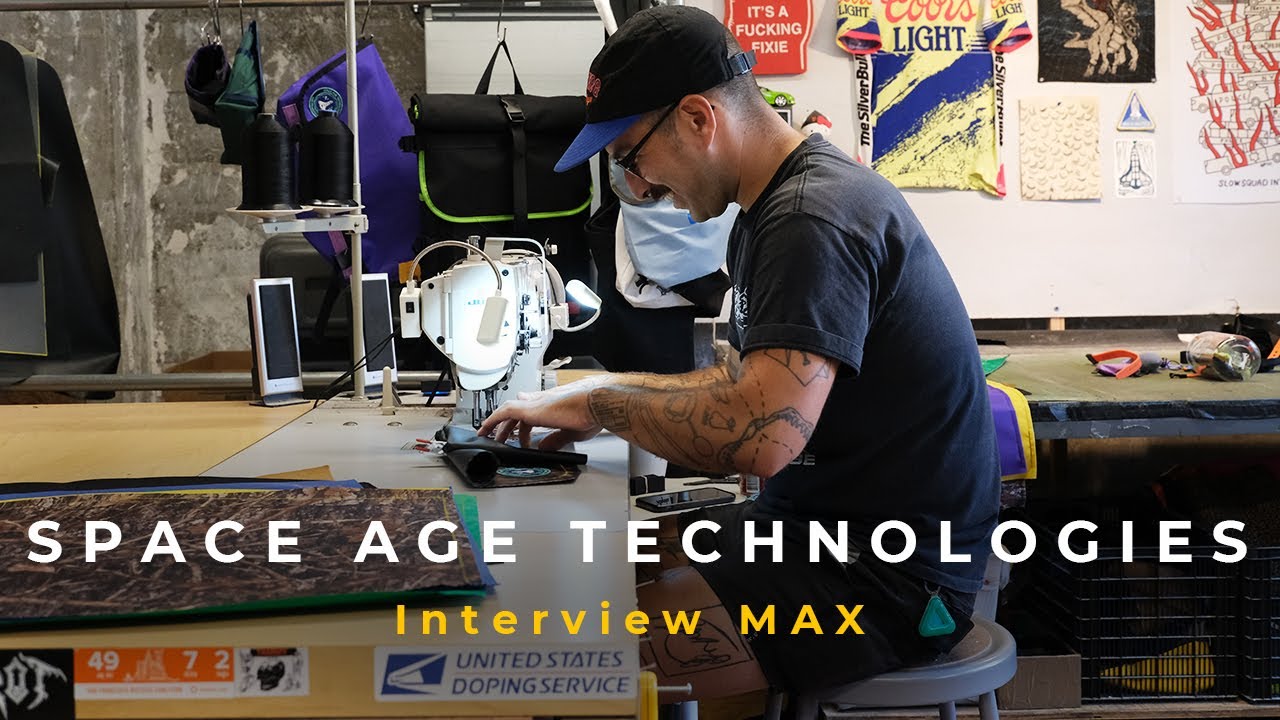Thermal Vacuum Technology: Testing for Extreme Environments
Thermal vac technology – Thermal vacuum technology plays a crucial role in testing the resilience of equipment and materials in harsh conditions, particularly in the realm of space exploration. This […]

Thermal vac technology – Thermal vacuum technology plays a crucial role in testing the resilience of equipment and materials in harsh conditions, particularly in the realm of space exploration. This technology simulates the extreme temperatures and vacuum of space, providing valuable insights into how products will perform under such demanding circumstances.
The core of thermal vacuum technology lies in its ability to create a controlled environment that mimics the conditions found in space. This involves lowering the pressure within a specialized chamber to create a vacuum, while simultaneously adjusting the temperature to replicate the thermal fluctuations experienced in space. By subjecting products to these rigorous conditions, engineers and scientists can identify potential weaknesses and ensure that the equipment is ready for its intended mission.
Introduction to Thermal Vacuum Technology
Thermal vacuum technology is a critical process used to simulate the harsh environmental conditions found in space or other extreme environments. This technology is used to test the performance and reliability of components, systems, and satellites under extreme temperatures and vacuum pressures, ensuring their ability to function flawlessly in their intended environments.
Fundamentals of Thermal Vacuum Technology
Thermal vacuum technology simulates the conditions found in space by subjecting components to extreme temperatures and vacuum pressures. The technology utilizes a thermal vacuum chamber, which is a sealed, insulated chamber designed to create a controlled environment.
Components of a Thermal Vacuum Chamber
The key components of a thermal vacuum chamber include:
- Vacuum Pump: The vacuum pump is responsible for evacuating the air from the chamber, creating a vacuum environment.
- Vacuum Gauge: The vacuum gauge monitors the pressure inside the chamber, ensuring it meets the desired vacuum level.
- Heating and Cooling Systems: These systems control the temperature inside the chamber, simulating the temperature fluctuations experienced in space or other extreme environments.
- Temperature Sensors: These sensors monitor the temperature of the test article and the chamber, providing accurate data for analysis.
- Test Article Fixture: This fixture holds the test article securely within the chamber and allows for the application of various environmental conditions.
- Data Acquisition System: This system records and analyzes data collected during the test, providing insights into the performance and reliability of the test article.
Industries that Utilize Thermal Vacuum Technology
Thermal vacuum technology is widely used in various industries, including:
- Aerospace: Thermal vacuum testing is essential for satellites, spacecraft, and other aerospace components to ensure their performance and reliability in the harsh environment of space.
- Defense: The military utilizes thermal vacuum technology to test the durability and functionality of weapons systems, sensors, and other equipment operating in extreme conditions.
- Electronics: Thermal vacuum technology is used to test the performance and reliability of electronic components and devices, such as semiconductors, integrated circuits, and displays.
- Medical: The medical industry utilizes thermal vacuum technology to test the performance and reliability of medical devices and equipment, such as implants, prosthetics, and surgical instruments.
- Research and Development: Thermal vacuum technology is used in research and development to test the performance and reliability of new materials, components, and systems under extreme conditions.
Applications of Thermal Vacuum Technology: Thermal Vac Technology

Thermal vacuum technology finds extensive use in various fields, particularly in the realm of spacecraft testing, where it plays a crucial role in simulating the harsh conditions of space. This technology is also employed in other applications, such as electronics testing and material science research.
Spacecraft Testing
Thermal vacuum chambers are essential tools for simulating the extreme conditions of space, which include vacuum, temperature fluctuations, and solar radiation. These chambers allow engineers to test the performance and durability of spacecraft components and systems under realistic conditions, ensuring their reliability in the unforgiving environment of space.
- Thermal cycling: The chambers are used to subject spacecraft components to rapid temperature changes, simulating the drastic temperature variations experienced in orbit. This helps identify potential weaknesses and ensure the components can withstand thermal stresses.
- Vacuum testing: The chambers create a near-perfect vacuum, mimicking the low-pressure environment of space. This testing is crucial for assessing the performance of spacecraft systems, such as propulsion systems, in the absence of atmospheric pressure.
- Solar radiation simulation: Thermal vacuum chambers can simulate the effects of solar radiation on spacecraft materials and components. This helps engineers understand how these materials will degrade over time and design components that can withstand the harsh conditions of space.
Simulating Space Environments
Thermal vacuum chambers are designed to replicate the unique environmental conditions found in space. By creating a vacuum and controlling temperature, these chambers allow engineers to test the performance and reliability of spacecraft components and systems under realistic conditions.
- Vacuum: The chambers create a near-perfect vacuum, replicating the low-pressure environment of space. This is essential for testing the performance of spacecraft systems, such as propulsion systems, in the absence of atmospheric pressure.
- Temperature: Thermal vacuum chambers can control temperature to simulate the extreme temperature variations experienced in space. This allows engineers to assess the performance of components at both high and low temperatures, ensuring they can withstand the harsh conditions of space.
- Radiation: While thermal vacuum chambers don’t directly simulate radiation, they provide a controlled environment for testing components that have been exposed to radiation. This helps engineers understand how radiation affects the performance and longevity of spacecraft components.
Other Applications
Thermal vacuum technology is also employed in other applications, such as electronics testing and material science research.
- Electronics testing: Thermal vacuum chambers are used to test the performance and reliability of electronic components and systems under extreme conditions. This is particularly important for applications such as aerospace, automotive, and telecommunications, where components are subjected to harsh environments.
- Material science research: Thermal vacuum chambers are used to study the behavior of materials under extreme conditions. This helps scientists understand how materials behave in different environments and develop new materials with improved properties.
Thermal Vacuum Testing Procedures
Thermal vacuum testing is a crucial aspect of qualifying components and systems for space applications. It simulates the harsh environmental conditions encountered in space, specifically the extreme temperatures and low pressure. This testing procedure helps to identify potential weaknesses in a design and ensure that the equipment can withstand the rigors of its intended mission.
Steps Involved in Conducting a Thermal Vacuum Test
The process of conducting a thermal vacuum test involves a series of carefully controlled steps. This section will detail the essential steps involved in this procedure, highlighting the importance of meticulous execution for accurate results.
- Preparation: The first step involves meticulously preparing the test article, ensuring it is clean, free of contaminants, and properly instrumented. This involves installing sensors to monitor key parameters like temperature, pressure, and vibration, as well as connecting data acquisition systems to record and analyze the data during the test.
- Chamber Evacuation: The test article is then placed in a thermal vacuum chamber, which is a sealed environment designed to create a vacuum and control temperature. The chamber is evacuated using powerful vacuum pumps to achieve the desired vacuum level, typically ranging from 10-6 to 10-8 Torr. This process removes air and other gases from the chamber, simulating the low pressure of space.
- Temperature Cycling: Once the desired vacuum level is reached, the test article is subjected to a series of temperature cycles. This involves raising and lowering the temperature of the test article within a specific range, mimicking the temperature fluctuations experienced in space. The temperature range and cycling time are determined by the specific mission requirements and the thermal properties of the test article.
- Data Acquisition and Analysis: Throughout the test, data is continuously collected by the instrumentation installed on the test article. Data acquisition systems record parameters like temperature, pressure, and vibration, which are then analyzed to assess the performance of the test article under vacuum and thermal stress. This analysis helps to identify any potential issues or degradation in the test article’s functionality.
- Post-Test Evaluation: After the completion of the thermal vacuum test, the test article is carefully removed from the chamber and inspected for any signs of damage or degradation. The collected data is thoroughly analyzed to identify any anomalies or deviations from expected behavior. Based on the results, adjustments may be made to the design or operational procedures to ensure the equipment’s reliability in space.
Temperature and Vacuum Control
Maintaining precise control over temperature and vacuum is crucial for the accuracy and reliability of thermal vacuum testing.
- Temperature Control: Temperature is controlled using heating and cooling systems within the chamber. These systems can be adjusted to create specific temperature profiles that simulate the thermal environment experienced in space. The accuracy of temperature control is critical, as even small deviations can significantly impact the performance of the test article.
- Vacuum Control: Vacuum levels are monitored and controlled using vacuum gauges and pumping systems. Maintaining the desired vacuum level is essential for simulating the low pressure of space. This ensures that the test article is exposed to the correct environmental conditions and that any outgassing from the test article is properly managed.
Instrumentation and Data Acquisition Systems
Instrumentation plays a critical role in thermal vacuum testing by providing accurate measurements of various parameters.
- Temperature Sensors: Temperature sensors are used to monitor the temperature of the test article and the surrounding environment. These sensors can be thermocouples, resistance temperature detectors (RTDs), or other types of temperature-sensitive devices. The data from these sensors is used to verify that the temperature profile is within the specified range and to identify any temperature gradients within the test article.
- Pressure Gauges: Pressure gauges are used to measure the vacuum level inside the chamber. These gauges can be ionization gauges, Pirani gauges, or other types of vacuum sensors. The data from these gauges is used to ensure that the desired vacuum level is maintained throughout the test.
- Vibration Sensors: Vibration sensors are used to measure any vibrations that occur during the test. These sensors can be accelerometers or strain gauges. The data from these sensors is used to identify any potential vibration-related issues with the test article.
- Data Acquisition Systems: Data acquisition systems are used to collect, record, and analyze the data from the various sensors. These systems can be computer-based or stand-alone units. The data is typically stored in a database for later analysis and interpretation.
Benefits and Challenges of Thermal Vacuum Technology

Thermal vacuum testing is a valuable tool in many industries, particularly in aerospace, defense, and electronics. It helps ensure the reliability and functionality of products in extreme environmental conditions. This section explores the advantages and limitations of this technology, providing a comprehensive understanding of its applications and considerations.
Advantages of Thermal Vacuum Technology
Thermal vacuum testing offers several advantages that make it an essential part of product development and qualification.
- Accurate Simulation of Space Environment: Thermal vacuum chambers recreate the harsh conditions of space, including low pressure, high vacuum, and extreme temperatures. This allows engineers to test the performance of components and systems under realistic conditions, ensuring they can withstand the rigors of space travel.
- Early Detection of Design Flaws: By subjecting products to extreme conditions, thermal vacuum testing can identify design flaws and weaknesses early in the development cycle. This helps prevent costly failures and product recalls later in the process.
- Enhanced Product Reliability: The rigorous testing process helps to ensure the long-term reliability and performance of products in demanding environments. This is particularly important for critical applications like spacecraft and satellites, where failures can have catastrophic consequences.
- Cost-Effectiveness: While initial investment in thermal vacuum testing equipment can be significant, it can ultimately save costs by identifying problems early and reducing the risk of costly failures in the field. Additionally, the testing process can help optimize product designs, leading to cost savings in manufacturing and materials.
- Reduced Risk of Failure: Thermal vacuum testing helps mitigate the risk of product failure in space or other extreme environments. This is crucial for applications where product failure can result in significant financial losses, safety risks, or mission delays.
Challenges of Thermal Vacuum Technology
Despite its numerous advantages, thermal vacuum testing also presents certain challenges and limitations.
- Cost of Equipment and Testing: Thermal vacuum chambers and associated equipment can be expensive to purchase and maintain. Testing can also be time-consuming, requiring specialized expertise and resources.
- Complexity of Testing Procedures: The design and execution of thermal vacuum tests require a thorough understanding of the product, the test environment, and the relevant standards. This can be complex and time-consuming, especially for intricate products or systems.
- Potential for Test-Induced Damage: In some cases, the extreme conditions of thermal vacuum testing can damage the product being tested. This is especially true for sensitive components or materials. Careful test planning and execution are essential to minimize the risk of damage.
- Limited Availability of Testing Facilities: Access to thermal vacuum testing facilities can be limited, particularly for specialized or large-scale testing. This can lead to delays in product development and qualification.
Comparison with Other Testing Methods, Thermal vac technology
Thermal vacuum testing is often compared to other testing methods, such as environmental chamber testing, vibration testing, and shock testing. While each method has its own strengths and weaknesses, thermal vacuum testing offers a unique advantage in simulating the complex and extreme conditions of space.
- Environmental Chamber Testing: This method focuses on testing products under controlled temperature and humidity conditions. While it can provide valuable data, it does not replicate the vacuum and radiation conditions of space. Thermal vacuum testing is a more comprehensive approach for space applications.
- Vibration Testing: This method simulates the vibrations that products may experience during launch or in-flight. It is essential for ensuring product integrity during launch and in-orbit operations. While vibration testing is important, it does not address the extreme temperature and vacuum conditions of space.
- Shock Testing: This method simulates the sudden shock loads that products may experience during launch or landing. It is critical for ensuring product survivability during these events. Like vibration testing, shock testing focuses on specific aspects of space environment and does not fully replicate the complete space environment.
Future Trends in Thermal Vacuum Technology
Thermal vacuum technology has evolved significantly over the years, with advancements driving its applications across various industries. The future holds exciting possibilities as emerging technologies and innovations continue to shape the landscape of thermal vacuum testing. These advancements are expected to enhance the capabilities, efficiency, and accessibility of thermal vacuum technology, impacting industries such as aerospace, defense, pharmaceuticals, and electronics.
Impact of Emerging Technologies on Thermal Vacuum Technology
Emerging technologies are playing a crucial role in revolutionizing thermal vacuum technology. Advancements in areas like artificial intelligence (AI), automation, and advanced materials are paving the way for more sophisticated and efficient thermal vacuum testing processes.
- AI-Powered Thermal Vacuum Testing: AI algorithms can analyze vast amounts of data from thermal vacuum tests, identifying trends, anomalies, and potential failures. This data-driven approach can optimize testing parameters, reduce test durations, and improve overall test accuracy. For example, AI can be used to predict potential failures based on historical data, allowing for proactive adjustments to the testing process.
- Automated Thermal Vacuum Chambers: Automation is transforming thermal vacuum testing by streamlining processes and reducing human intervention. Automated chambers can control temperature, vacuum levels, and other parameters with precision, minimizing the risk of errors and ensuring consistency in test results. This automation can also enable remote monitoring and control, allowing for greater flexibility and accessibility to thermal vacuum testing facilities.
- Advanced Materials for Thermal Vacuum Chambers: The development of advanced materials, such as composites and high-performance alloys, is enabling the construction of more durable, lightweight, and energy-efficient thermal vacuum chambers. These materials can withstand extreme temperatures and vacuum conditions, while also reducing the overall footprint and energy consumption of the chambers. For example, the use of lightweight composites in chamber construction can significantly reduce the weight and transportation costs associated with thermal vacuum testing.
Potential Impact of Advancements on Industries
Advancements in thermal vacuum technology are expected to have a significant impact on various industries, leading to improvements in product reliability, reduced development costs, and faster time-to-market.
| Trend | Impact | Benefits |
|---|---|---|
| AI-Powered Thermal Vacuum Testing | Enhanced test accuracy, reduced test durations, improved failure prediction | Increased product reliability, reduced development costs, faster time-to-market |
| Automated Thermal Vacuum Chambers | Streamlined testing processes, reduced human intervention, improved consistency | Increased efficiency, reduced errors, enhanced reproducibility of test results |
| Advanced Materials for Thermal Vacuum Chambers | Improved durability, reduced weight, enhanced energy efficiency | Lower transportation costs, reduced environmental impact, increased accessibility to thermal vacuum testing |
Conclusion

Thermal vacuum technology is a powerful tool for ensuring the success of missions that venture beyond Earth’s atmosphere. By subjecting products to the extreme conditions of space, engineers can identify potential issues and ensure that equipment is robust and reliable. As technology continues to advance, the applications of thermal vacuum testing are likely to expand, playing a critical role in future space exploration endeavors and other demanding fields.
Thermal vacuum technology is a process used to simulate the harsh conditions of space. This process is crucial in testing the reliability of components destined for space exploration. The same principles of controlled environments and material stability are also applied in the development of new denture technology , ensuring a comfortable and long-lasting fit.
Thermal vacuum technology, therefore, plays a vital role in both space exploration and everyday dental care.





